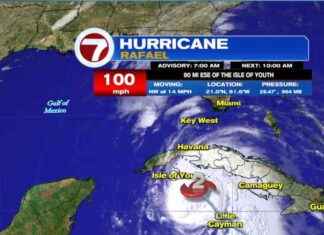45 years ago, when Llàtzer Moix and I began our careers, cultural journalism did not exist in Spain as an autonomous discipline. From then to the present we have lived through a golden age of the profession, not without problems but a golden age after all: the main newspapers have opened cultural sections and supplements, radio and television stations have created countless spaces dedicated to the subject. In this long process, linked to the development of Spanish democracy, it has been possible for some of us to specialize.
Llàtzer (Sabadell, 1955) has done so with singular dedication and talent, and this recently published Word of Pritzker, a book of conversations with 23 architects who have won the prestigious prize -the Nobel Prize for the profession-, makes it clear. The old friendship does not influence my assessment: it is a true milestone in our field.
But Llàtzer has asked me to talk about his career and that’s what I’m going to do. In the 1970s, our author joined the short-lived evening paper Catalunya Exprés, then El Correo Catalán, then La Vanguardia. In these last two newspapers we have coincided; In fact, he took me to La Vanguardia. The dean of the great Spanish newspapers, very dedicated to culture since its foundation in 1881, has also supported the contemporary boom in cultural journalism, which when Moix landed in the Pelayo street newsroom in 1983, Josep Ramoneda was beginning to mark it .
What influences weighed on the young Llàtzer Moix? An unavoidable one is the new journalism of Tom Wolfe and Gay Talese, which offered us at that time the Contraseñas de Anagrama collection. It is a question of a generational influence, more important in terms of themes (counterculture, social upheavals, architecture itself; let us not forget that Wolfe publishes Who is afraid of the fierce Bauhaus?) than in form, which in Llàtzer has always been narrative and agile but without the baroque style of New Journalism. Already in his maturity, Moix would deal with Ryszard Kapu?ci?ski quite often, and I do not rule out that his choral chronicle model also influenced him.
I think that the vital attitude of the character Moix, elegant, classic in some things, avant-garde in others, we could say postmodern, is transparent in his style.
There is another fundamental element, for him as for so many of us, and that is the experience of pre-Olympic and Olympic Barcelona, ??a moment of historical optimism, collective dynamism and concentration of creative spirits.
On a journalistic level, Llàtzer begins by looking at Mariscal, a young artist who moves surprisingly quickly from the Garriris’ countercultural comic to decorating bars; to the posters, the “bar-cel-ona” logo and the “immoral” design of stools, tables and lamps, and to being part of the Memphis group, a benchmark of the moment. He becomes an international figure, and is commissioned to create the Olympic mascot: Cobi.
After a first draft in the synthetic and portable Agenda Mariscal of 1984, in 1992 Moix published his narrative biography Mariscal, for which he interviewed 150 people. The character, in Moix’s words, symbolizes the spirit of adventure of “a generation that broke limits and faced many risks.” A generation, between hippieism and moderate and cautious integration into the system, to which Moix himself belongs.
We already find in its pages a succulent chronicle of how the Barcelona project absorbed everything interesting and creative that was placed within its reach in a communal initiative of dazzling success.
Mariscal, in fact, is a character very involved in the Barcelona of 1992. And we will turn to architecture from him. Moix began to write on the subject in La Vanguardia in the mid-1980s because international architects began to move to the city -such as Richard Meier or Frank Gehry- summoned for the urban reform by Pasqual Maragall’s entourage, and the newspaper commissioned him to follow them.
With his sensibility for architecture and design, key elements of Barcelona’s transformation, Moix opens a section in the media that until then had been reserved for professionals in the discipline, who tended to offer rather technical comments. And his tenacious and rigorous attention allows him to carry out a magnificent coverage of outstanding cultural aspects in Olympic Barcelona.
A part of it will be summarized in the book La ciudad de los architects, from 1994, which includes the intervention carried out by dozens of professionals, documents controversies such as the one that took place around the Montjuïc communications tower, the work of Santiago Calatrava, and portrays the dialectic between two figures of municipal urban planning, Oriol Bohigas and Josep Antoni Acebillo. “I see it as a western, a duel that Kirk Douglas (Bohigas) and Gene Hackman (Acebillo) would interpret to perfection,” editor Jorge Herralde would summarize.
The already established Moixian interest in architectural themes continues when the echoes of the Olympics fade away. In 2010 he published Miraculous Architecture, a snapshot of a period in which authorities and institutions throughout Spain wanted to follow the success of the Guggenheim Bilbao by hiring star architects, with very different results and often astronomical budgets. The projects of these great figures “as if they were Marian apparitions, dazzled mayors and presidents,” Moix pointed out.
Santiago Calatrava’s Valencia City of the Arts, Peter Eisenman’s eternally unfinished Cidade de Cultura in Santiago de Compostela, and Zaha Hadid’s Zaragoza Bridge Pavilion represented key anti-examples. With this iconic architecture “it was about providing images of impact to a political, business or citizen project”, rather than attending to the constitutive purposes of the profession.
There are not two without three, and we have already quoted Santiago Calatrava twice. In 2016, we wanted a Calatrava appeared. Architectural journeys through seduction and repudiation, which Julià Guillamon describes as “a chronicle of denatured Spanish democracy”. The Valencian creator would appear in Moix’s analysis as “the other side of Mariscal’s coin: the guy who corrupts postmodern ideas and puts them at the service of his greed and opportunism.”
In this work, Llàtzer Moix’s cultural journalism assumes its most critical and acid character in the face of a character and a way of working. Llàtzer is personally an orderly and austere man, I would say even minimalist, he likes the architecture that meets these characteristics, and on the other hand he does not like the one that goes to the totally opposite side, like the one represented by Calatrava. With regard to the Palacio de Congresos de Oviedo, which has cost 300 million euros, he asks himself with sharp humor: how many periodontology congresses will have to be organized to make this investment profitable?
But, iconic figures aside, Llàtzer has maintained a ground-level attention to recent Catalan and Spanish architecture, establishing its general features and paying attention to its emerging elements. He himself points out that he does not have the vocation of a mandarin, but that his journalistic work “acquires meaning when he mediates between the work of architects and the general public.”
The interested party can find the result in the compilation volume From the extravagant to the essential. Ten years of architecture criticism (2007-2016), where a battery of active figures appears, from veterans such as Ricardo Bofill or Carme Pinós to the then thirtysomethings Josep Camps and Olga Felip, or Anna and Eugeni Bach.
In the prologue of this anthology, the author notes significantly that “the crisis has imposed a significant change of direction” to architectural practice, and that, in general terms, “from whimsy and the extravagant it has passed to containment and the essential” . And the criticisms collected respond to its name, as when, regarding the new Las Arenas shopping center, it points out that its entrances “provide more strident notes to a square (the Plaza de España) that once enjoyed constructive harmony and is now a real gibberish architectural”.
Although Moix’s tone is always informative and correct, as he himself points out “I can also bite”.
His work has had a literary aspect. He is particularly interested in wit and humor. As a result of a long personal relationship, in 2006 he published Mundo Mendoza, a biographical essay on the author of The City of Prodigies: Attention, another creator closely linked to the great phenomenon of Olympic Barcelona, ??of which he became the novelistic paradigm. Mendoza, Moix points out, “is the king of literary miscegenation: he sews voices, genres and narrative registers without the seams being noticed”.
“Under that irreproachable bourgeois demeanor –he points out, and we intuit a smile from the journalist as he does so-, Mendoza hides an anarchist hooligan, who serves his humor in an ironic, sarcastic or absurd format. Like in that passage from The City of Wonders: ‘God put man on earth to keep it a little clean and presentable.
He will also delve into the personality and work of the British Tom Sharpe, whom he met in Cambridge in 1985, and whom he sees on several occasions at his home in Llafranch “where he does not understand the language, nor does he intend to, in a gesture of self-protection ”. In 2002, he dedicated the interview book Wilt soy yo to him.
Llàtzer Moix has written several thousand journalistic pieces for La Vanguardia, many of them anonymous -in recent years he has been deputy editor-in-chief- but also interviews, reports and weekly columns. Between 2005 and 2007 he held a space that is among my favorites; It was called Día Libre and in it he offered some elaborate chronicles on architectural, literary, pictorial, citizen…
I could talk as much about the 1,500 illustrations by Perico Pastor for a Bible in Catalan, as about the premiere of the work El llibertí; of a meeting with Robert Hughes at the Palau de la Musica, where he confirmed that his stage as an art critic had ended; of how the writer Pablo Tusset shunned fame, or of the brief life of the works awarded the FAD prize for interior design: he documented that three out of four had already disappeared.
Let’s go back to Word of Pritzker, a major work, which the author dedicates, like that initial Mariscal, to his wife Alicia. It is a recapitulatory project, in which through these 23 winners – figures of great depth, it is not an exaggeration to consider that they are, at this time, among the best architects in the world – draws a vivid panorama of this professional practice in the recent times. It addresses the social implications of its construction and also constitutes a suggestive human document, a guide to what a young person has to do in life to successfully follow a vocation; in some cases the collected stories appear to us as authentic learning novels. Finally, it offers a reflection on how architecture can contribute to the improvement of society.
It is a book that did not exist on the international scene and we can predict a good future in the field of translations.
The division that Moix establishes in the epilogue illustrates the conclusions obtained: among these 23 winners we would find “alpha authors”, whose motto could be “it is worth the risk”, and whose buildings “have sometimes been authentic talismans for the cities where they get up”. This is the case of Gehry or Jean Nouvel. Secondly, colleagues with work that is also innovative, “although not as striking”, more attentive “to the renewal of architectural typologies or construction techniques”, such as Norman Foster, Richard Rogers or Renzo Piano.
Others have considered it a priority to “stimulate the senses of the users of their buildings”, such as Peter Zumthor or the Catalan team RCR.
The “Iberian masters” such as Álvaro Siza or Rafael Moneo would have privileged the continuity of the lessons of the Modern Movement, with a desire for discretion that should not be confused with a lack of ambition.
While some interviewees prioritize intervention of a social nature, such as Alejandro Aravena or Shigeru Ban, others practice “the fusion of traditional knowledge associated with their vernacular cultures with the teachings of international modernity.” It would be the case of Balkrishna Doshi or Wang Shu. And in recent years, environmental concern defines the work of Toyo Ito, Kazuyo Sejima or Ryue Nishizawa.
Pritzker’s word could not have been carried out without a lot of skill, a lot of knowledge and a lot of volunteerism. To prepare it, Moix has traveled to a dozen countries over five years -with the pandemic in between-, taking advantage of journalistic trips or self-financing the effort, and on occasions he has sweated his best to achieve the goal. An essential part of his charm is the previous making-off where he explains how he came to carry out each interview, and to convince figures in some cases very old, in others very busy, and in some not a little controlling, to submit to his interrogation.
Over the years it has had the privilege and good taste of having a faithful and constant editor, Anagrama. Today, Llàtzer’s books in his catalog shine within the canon of cultural journalism, and are essential for understanding what has happened in Barcelona and in the architectural world in the last half century.
This text was read at the presentation of ‘Word of Pritzker’ that took place on July 7 in the auditorium of the Disseny hub Barcelona








